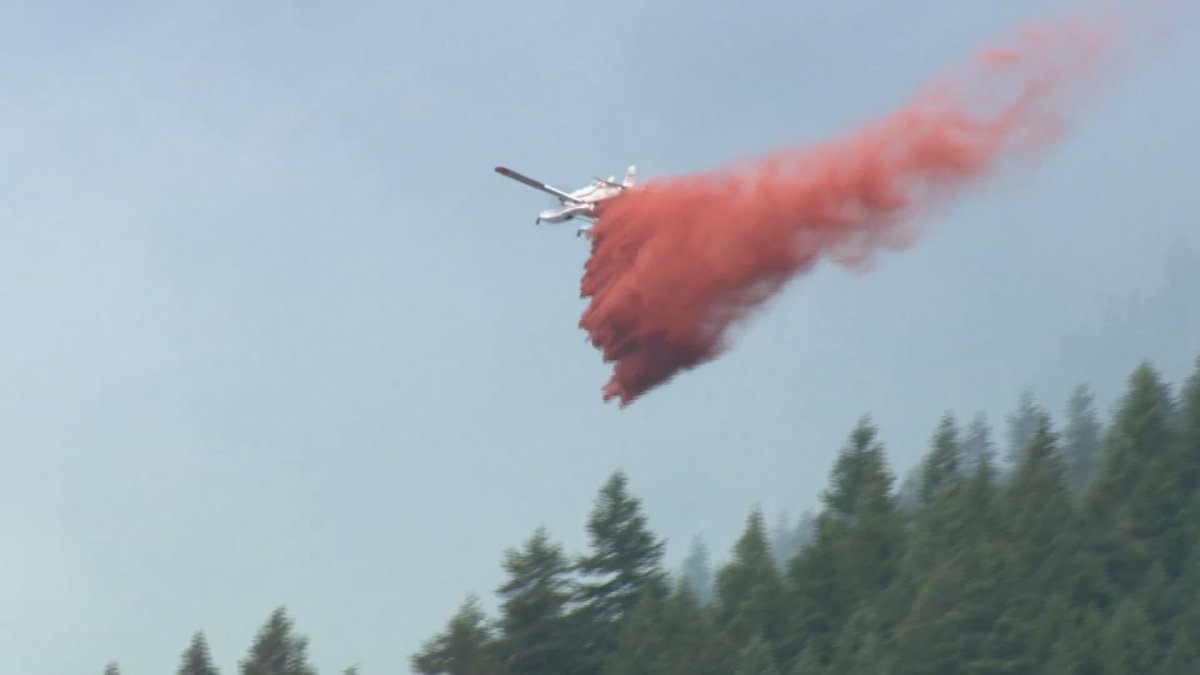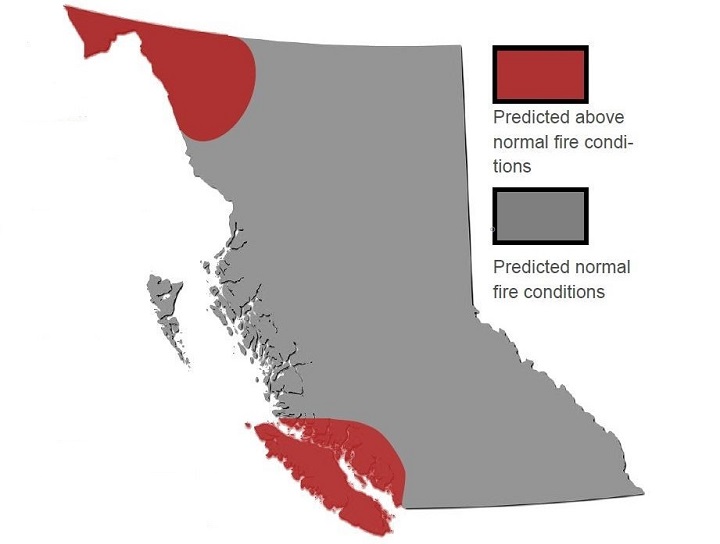The BC Wildfire Service released its summer outlook this week, and despite recent rainfall in many sections of the province, normal fire conditions are being predicted for July.

“The majority of the province is experiencing normal fuel conditions due to the precipitation received during the latter half of June,” BC Wildfire Service (BCWS) said in its outlook released Friday.
“Despite this rainfall, many weather stations recorded June as drier and warmer than normal. The province still has underlying drought conditions that could rapidly dry fuels once rainfall amounts diminish.”
The BCWS’s daily fire danger rating for Friday was a mixed bag.
Most of the southern half of the province had a very low fire rating, though coastal sections ranged between low and moderate. Most of Vancouver Island, though, was moderate, though there was a band of high risk north of Victoria.
In the northern half of B.C., the ratings ranged from low to moderate to high, along with a half-dozen pockets of extreme.
WATCH BELOW (Aired July 3, 2019): Canadian air tankers sent to help fight Washington state wildfire just south of Osoyoos

The fire danger ratings come out daily at approximately 2 p.m.
“The northwest corner of the province has received the least rainfall and remains an area of concern this summer,” BCWS said in the outlook.

Get breaking National news
“As well, forecasts indicate that much of the coast may see below-normal rainfall and above-normal temperatures. The interior is also showing the potential for warmer temperatures, but above-seasonal rainfall.”
WATCH BELOW (Aired June 30, 2019): Heat wave keeps Europe sweating as it breaks records with no signs of stopping

As of Saturday, July 6, there have been 448 fires since April 1, including 25 in the last seven days.
Currently, there are 23 active fires, with 11 in the Coastal Fire Centre, four in the Northwest and Prince George Fire Centres, plus two each in the Kamloops and Southeast Fire Centres.
BCWS says the 448 wildfires so far this year are near normal (443), though the number of hectares burned (11,294) “is only a fraction of what we’ve experienced in the past at this stage in the season.”
WATCH BELOW (Aired June 21, 2019): Focus BC: Sea-to-Sky wildfire evacuation plan

The service added that 66 per cent of fire starts this season have been linked to human activity, followed by lightning-caused fires at 32 per cent.
BCWS also gave a brief extended outlook for August and September.
“This period continues to show a high probability of above-seasonal temperatures in the southern half of the province, particularly on Vancouver Island,” the outlook said.
In making the outlook, BCWS says its forecast is assessed by meteorologists and fire behaviour specialists who consider a range of environmental factors – such as conditions that affect soil moisture, fine fuel dryness, and vegetation growth – and weather data.




Comments